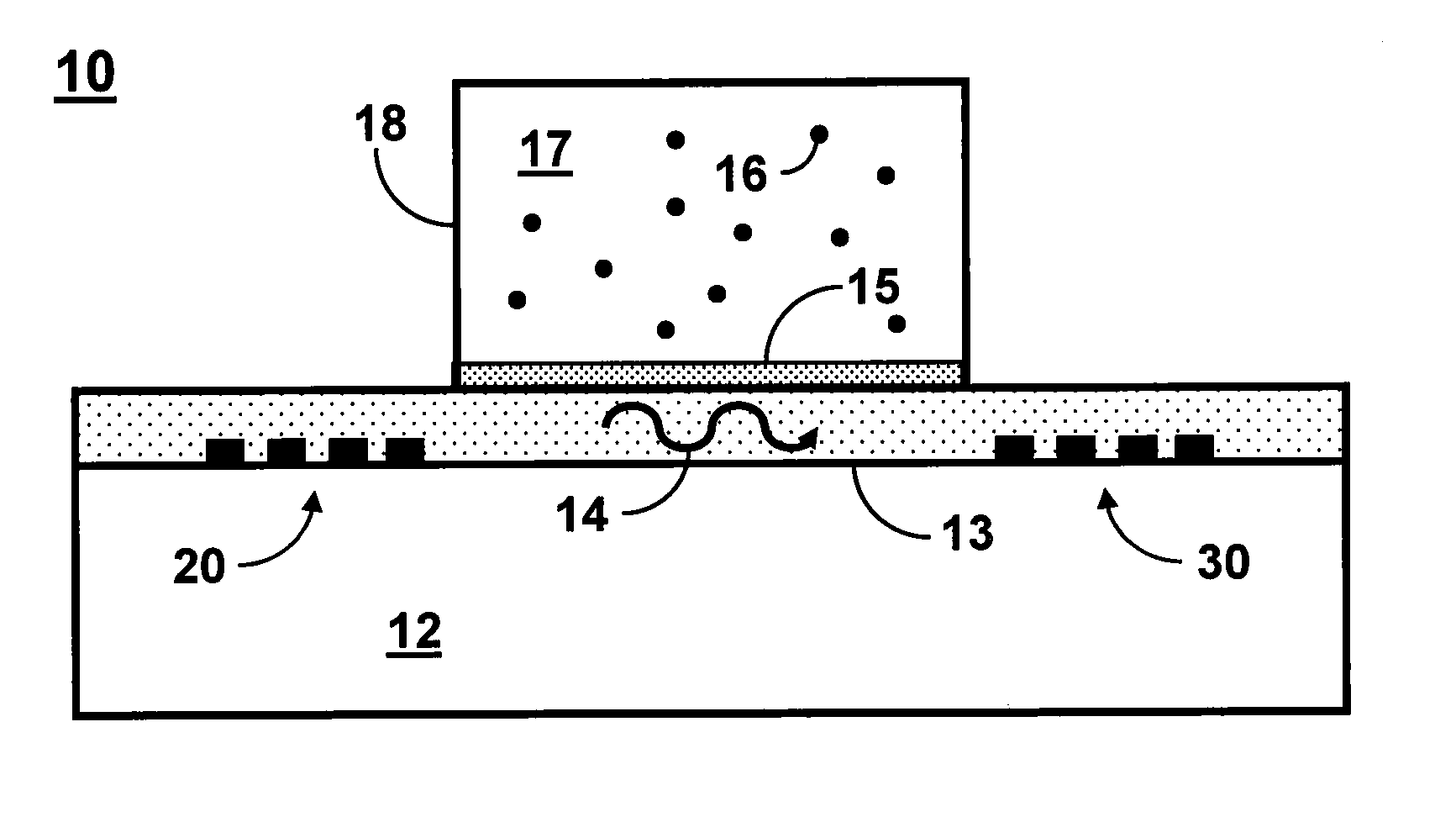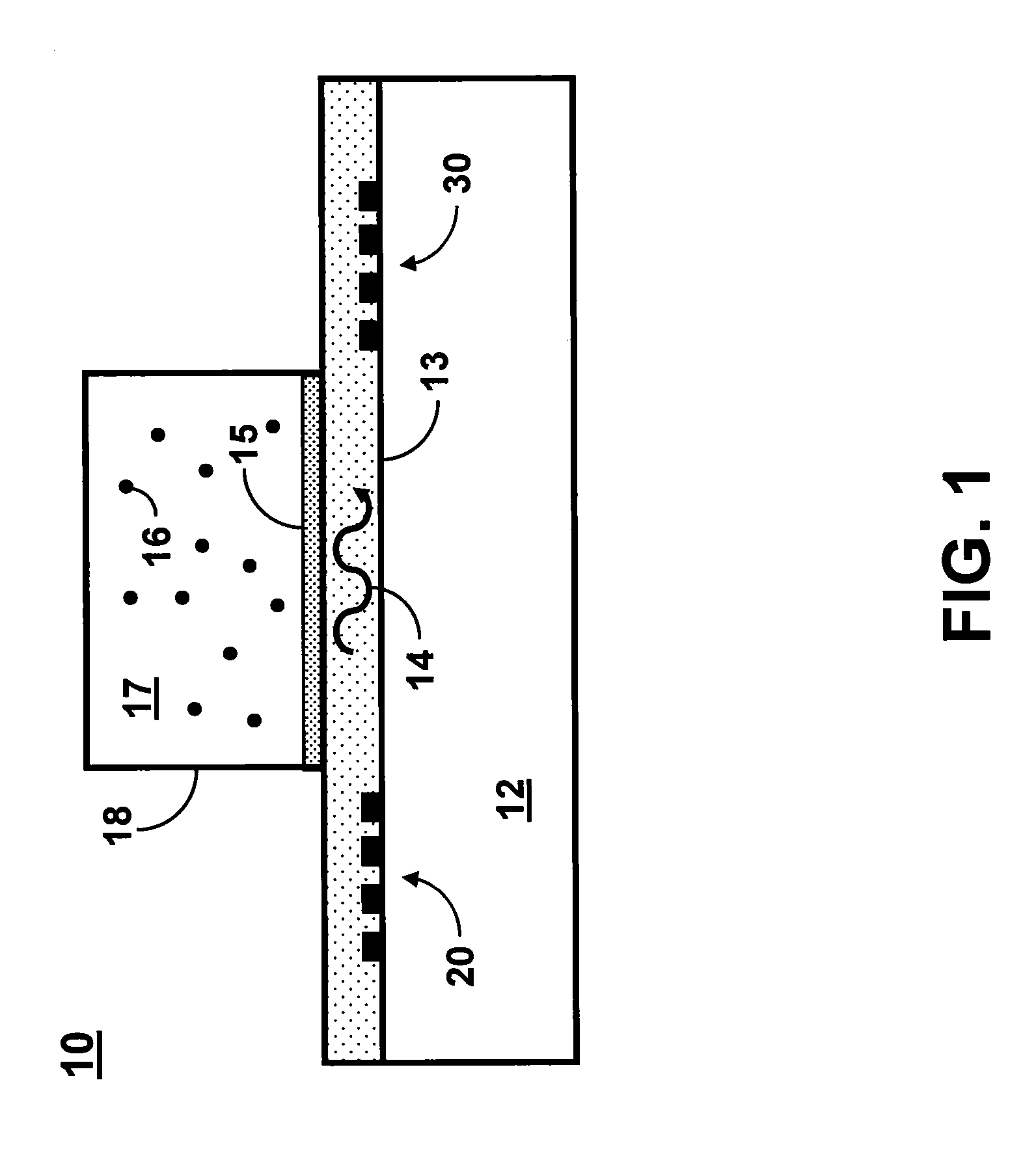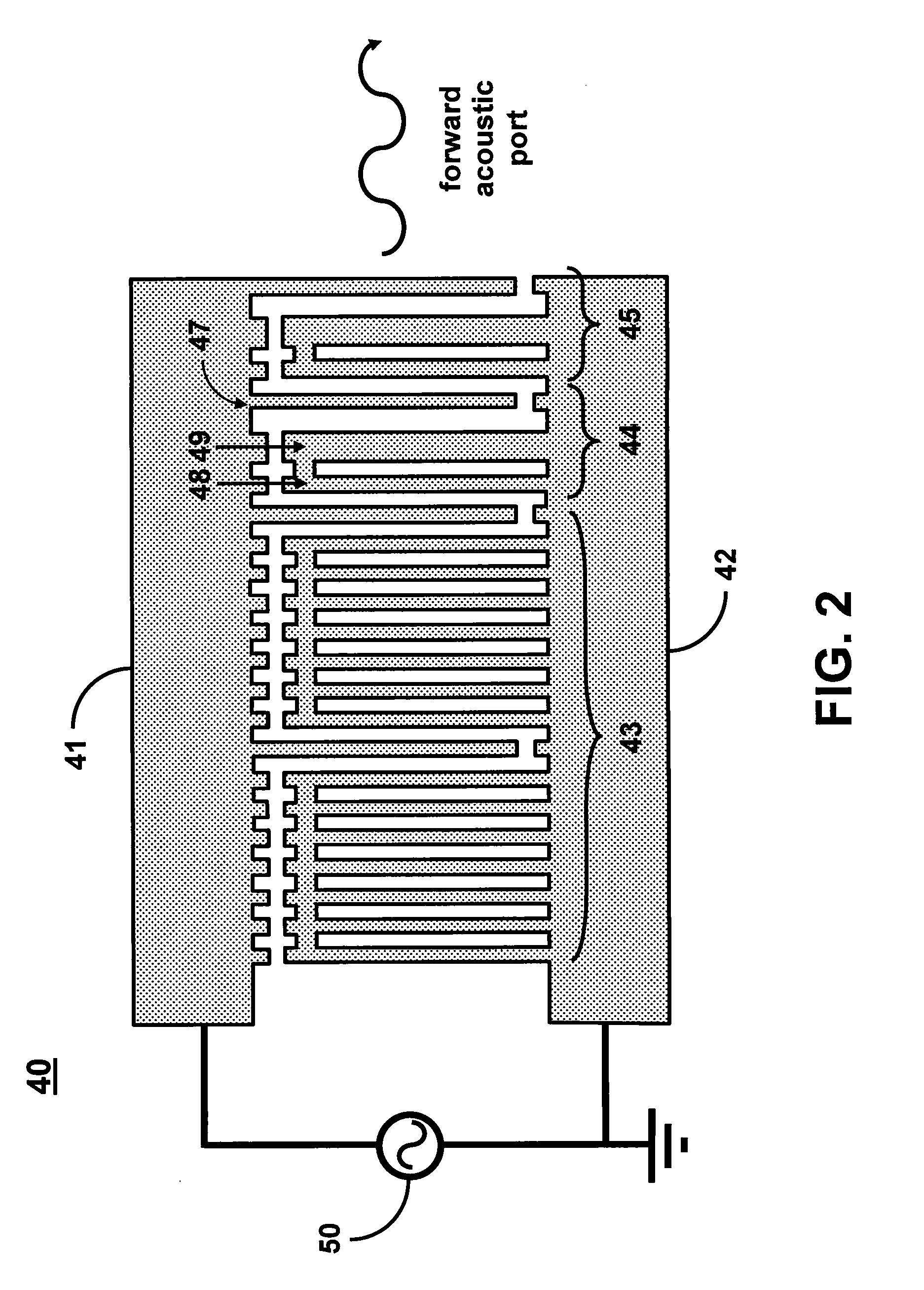High-frequency shear-horizontal surface acoustic wave sensor
a technology of acoustic wave sensor and a horizontal surface, applied in the field of biological sensing, can solve the problems of further complicated design, and the inability to support leaky waves on the substra
- Summary
- Abstract
- Description
- Claims
- Application Information
AI Technical Summary
Benefits of technology
Problems solved by technology
Method used
Image
Examples
example
Love Wave Sensor Fabrication
[0037]As an example of the present invention, a SPUDT was fabricated that enabled high frequency (330 MHz) excitation of the SH-type wave on LTO for array operation. The wavelength is of order 10 μm for most materials at an operating frequency of 330 MHz, therefore these transducers can be fabricated using standard photolithographic techniques. Love wave sensors were fabricated using 36° YX LTO wafers that were 510 μm thick by 100 mm in diameter, and single-side polished. Prior to metallization of the IDTs, wafers were cleaned in a barrel asher, followed by dipping in 1 vol % hydrofluoric acid (HF). A negative-tone photoresist (PR) was applied onto the wafer using a spin coater with a Gyrset lid to achieve a thickness of 2.0 μm. After patterning, the wafers were metallized with 50 Å of titanium for improved adhesion followed by 5000 Å aluminum using an electron-beam evaporator. An acetone bath was used to perform the lift-off, followed by rinsing in metha...
PUM
 Login to View More
Login to View More Abstract
Description
Claims
Application Information
 Login to View More
Login to View More - R&D
- Intellectual Property
- Life Sciences
- Materials
- Tech Scout
- Unparalleled Data Quality
- Higher Quality Content
- 60% Fewer Hallucinations
Browse by: Latest US Patents, China's latest patents, Technical Efficacy Thesaurus, Application Domain, Technology Topic, Popular Technical Reports.
© 2025 PatSnap. All rights reserved.Legal|Privacy policy|Modern Slavery Act Transparency Statement|Sitemap|About US| Contact US: help@patsnap.com



